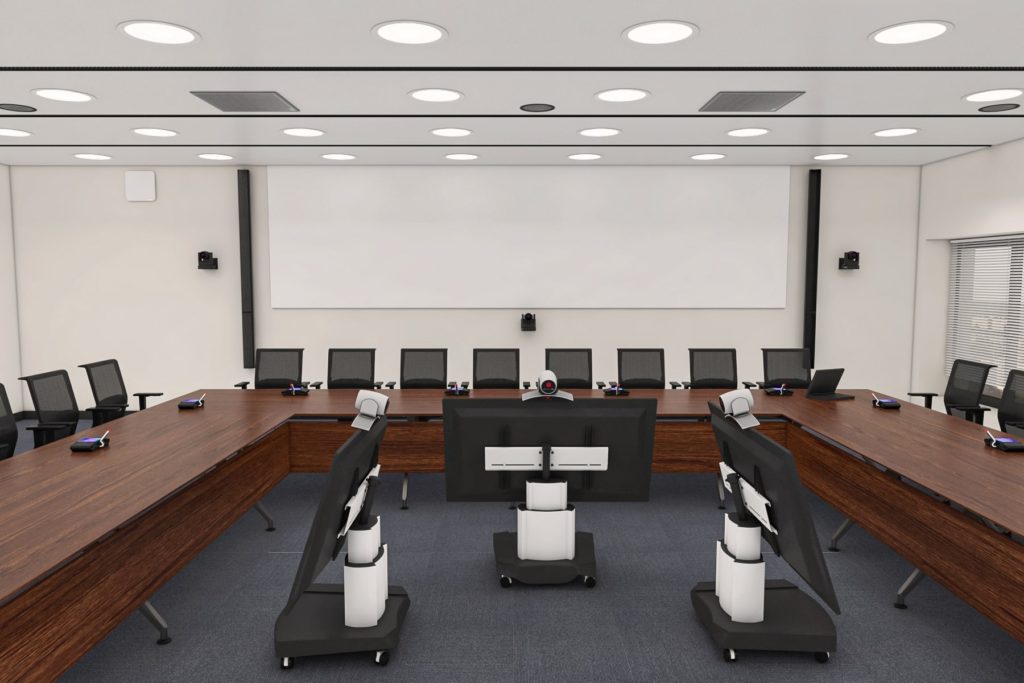
Elevating Collaboration: Designing Conference and Meeting Rooms for Success
Introduction: Conference and meeting rooms serve as the epicenter of collaboration, decision-making, and innovation within a business or organization. In this blog post, we’ll explore essential elements and creative design ideas to optimize these spaces, creating environments that foster productivity, engagement, and effective communication.
Flexible Furniture Arrangements:
Design meeting rooms with flexible furniture arrangements to accommodate various meeting formats. Consider modular tables and movable seating to allow for easy reconfiguration based on the type of meeting, whether it’s a presentation, brainstorming session, or collaborative discussion.
Technology Integration:
Integrate cutting-edge technology to enhance communication and collaboration. Equip meeting rooms with video conferencing systems, interactive displays, and high-quality audiovisual equipment. Ensure seamless connectivity to facilitate virtual meetings and presentations.
Comfortable Seating and Ergonomics:
Prioritize comfortable and ergonomic seating to ensure participants remain focused and engaged during meetings. Choose chairs with proper lumbar support, and consider options with swivel or recline features. Comfortable seating contributes to a more productive and attentive atmosphere.
Natural Lighting and Proper Illumination:
Maximize natural light and complement it with thoughtful artificial lighting. Position meeting rooms to take advantage of natural daylight, and incorporate adjustable lighting fixtures to create a well-lit and inviting environment. Proper illumination is crucial for maintaining focus and energy during meetings.
Branding and Identity:
Infuse the meeting room with the organization’s branding elements. Display company logos, mission statements, or key values to reinforce the identity of the business. Customized branding contributes to a cohesive and professional atmosphere.
Acoustic Considerations:
Address acoustic considerations to minimize distractions and ensure clear communication. Use sound-absorbing materials, acoustic panels, or even carpeting to reduce echoes and background noise. A well-designed acoustic environment is essential for productive and focused meetings.
Flexible Whiteboard and Presentation Space:
Incorporate writable surfaces for brainstorming and idea generation. Consider magnetic whiteboards, glass boards, or even writable walls. Having a designated space for visual collaboration enhances creativity and serves as a focal point for sharing ideas.
Comfortable Breakout Areas:
Designate comfortable breakout areas within or adjacent to the meeting room. These spaces can serve as informal discussion areas during breaks or provide a change of scenery for smaller group discussions. Consider lounge seating, coffee tables, and natural elements for a relaxed atmosphere.
Greenery and Biophilic Design:
Incorporate biophilic design elements, such as indoor plants or natural materials, to create a refreshing and invigorating atmosphere. Greenery has been shown to improve concentration and well-being, making it a valuable addition to meeting spaces.
User-Friendly Layouts:
Ensure that the meeting room layout is user-friendly and encourages engagement. Avoid overly formal setups and consider a more collaborative arrangement, such as a circular or U-shaped seating configuration, to promote interaction among participants.
Conclusion: Designing effective conference and meeting rooms is about creating spaces that inspire collaboration, communication, and innovation. By incorporating flexible furniture arrangements, advanced technology, comfortable seating, ample lighting, branding elements, acoustic considerations, writable surfaces, breakout areas, biophilic design, and user-friendly layouts, businesses can create environments that elevate the quality of meetings and contribute to the overall success of their endeavors. A well-designed meeting space isn’t just a room—it’s a catalyst for meaningful discussions and positive outcomes.




